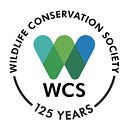Convention on Migratory Species CoP 13
A Critical Treaty for Migratory Birds Must Find Its Way Forward
By Alfred DeGemmis, Jonathan C. Slaght & Martin Robards | February 20, 2020
The Pacific Ocean is framed by ancient coastal travel corridors: aerial highways that have, for centuries, seen annual movements by hundreds of thousands of birds. On one side is the East Asian-Australasian Flyway, a mighty thoroughfare that extends from Alaska and the Russian Arctic in the north, moves through the Yellow Sea, then blossoms to send birds to wintering grounds everywhere from India to Southeast Asia, Australia and New Zealand.
Across to the east, the Americas’ Pacific Flyway starts in the North American Arctic, swerves through Central America, and then passes along the South American Andes all the way to Patagonia.
Unique species use these flyways, such as the iconic Spoon-billed Sandpiper, Nordmann’s Greenshank, Dunlin, and Whimbrel. However, the integrity of these (and other global flyways) are under grave threat from coastal development, illegal take and trade of species, bycatch problems, and more.
Thankfully, there are international frameworks in place to help spur cooperation between different stakeholders and improve the effectiveness of conservation efforts. The East Asian-Australasian Flyway Partnership (EAAFP), for example, is a formal structure by which governments, NGOs, and private organizations can coordinate on voluntary avian conservation actions.
And the Arctic Migratory Birds Initiative (AMBI), part of the Arctic Council’s Conservation of Arctic Flora and Fauna working group, is an agreement among Arctic range states to focus on declining Arctic breeding migratory bird populations.
But perhaps the most promising framework could, or should, be the Convention on the Conservation of Migratory Species (CMS), an intergovernmental treaty (or, more specifically, a family of international agreements).
While other international conservation frameworks are voluntary (such as those produced by the EAAFP) or limited in geographical or taxonomical scope (such as AMBI), CMS provides a legal architecture for the conservation of migratory species, instigating collaborative efforts through the listing of various species in two appendices that require action from governments.
An Americas Flyway Task Force has been convened under Convention on the Conservation of Migratory Species of Wild Animals (CMS), and has begun to implement a CMS-approved action plan.
Importantly, CMS has existing convening power (and even greater potential) to encourage different types of formal and informal conservation cooperation around specific species, geographies, or exceptional and threatened migrations.
Of course, CMS Parties and colleagues such as the Wildlife Conservation Society, BirdLife International, and Audubon Society have already been taking steps to address issues facing these species. An “Americas Flyway Task Force” has been convened under CMS, and has begun to implement a CMS-approved action plan.
A series of flyway-related issues are being reviewed now by the 13th meeting of the Conference of the Parties (CMS CoP13) in Gandhinagar, India, including implementation of previously agreed initiatives and action plans for individual flyways, studies on the illegal killing and trade in migratory bird species, and other efforts around power lines, light pollution, and more. This current CoP is a critical time for us to re-evaluate, and redouble, our efforts to achieve our goals for these flyways.
Governments can do their part in this by taking a few key steps:
Update and re-organize the legal architecture of CMS to simplify the obligations of parties.
CMS is a complex sprawl of treaties and agreements. Decisions related to migratory species along these international flyways are scattered throughout, which can make it somewhat difficult for national Parties to identify their obligations and prioritize work. Simple changes could be made by Parties at meetings of the Conference of the Parties, in close consultation with the CMS Scientific Council and Standing Committee.
The CoP is reviewing implementation of previously agreed initiatives and action plans for individual flyways, studies on the illegal killing and trade in migratory bird species, and efforts around power lines, light pollution, and more.
Offer more attention and resources for the implementation of work already agreed to by cms parties.
There are many exciting activities that have been approved by CMS already, including a study of illegal taking and killing of migratory birds in Central America, that await only funding to proceed. We urge governments that are Parties to CMS, as well as NGOs and other stakeholders, to invest in CMS as a platform through which to cooperate and accomplish conservation on these issues.
Encourage critical non-member states to join CMS.
Partnerships are only as strong as their partners. At present, key countries along the EAAF and Americas flyways — namely the United States, Canada, China, Russia, Japan, and Indonesia — are not members. While some of these countries routinely take domestic measures to protect habitats and birds along the flyways (China, for example, has already taken huge steps towards conservation of this flyway through protecting Yellow Sea mudflats), we recommend that they consider engaging with CMS more actively, if only to coordinate their domestic interventions with other countries.
Conservation of migratory birds is at stake. The problems facing these flyways are daunting, but solvable. At CoP13, CMS gives us the opportunity to start reflecting on legal issues, and work together to make CMS an even stronger platform for Parties and non-Parties. We look forward to doing our part to improve on efforts that are our best hope for conserving these exceptional migratory birds.
— — — — — — — — — — — — — — — — — —
Alfred DeGemmis is Senior Manager for International Policy at WCS (Wildlife Conservation Society). Jon Slaght is Russia and Northeast Asia Coordinator at WCS. Martin Robards is Director for the Arctic Beringia Region at WCS.The Wildlife Conservation Society (WCS) works along the length of two critical flyways on either side of the Pacific Ocean — the Americas Flyway and the East-Asian Australasian Flyway — looking for science-based solutions to complex conservation and sustainable coastal management issues.
